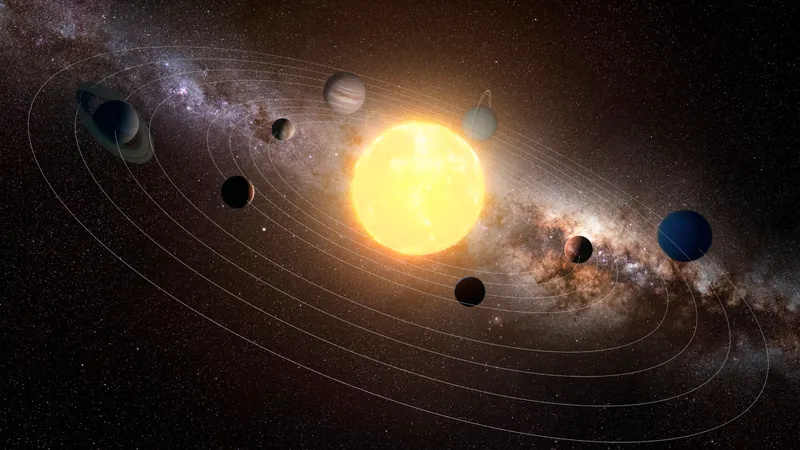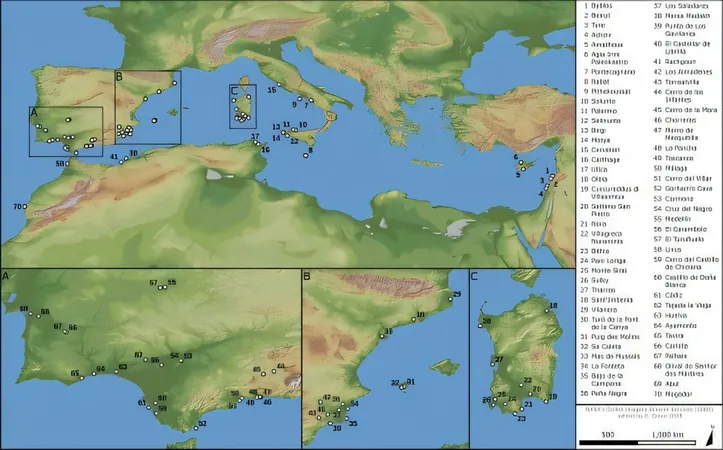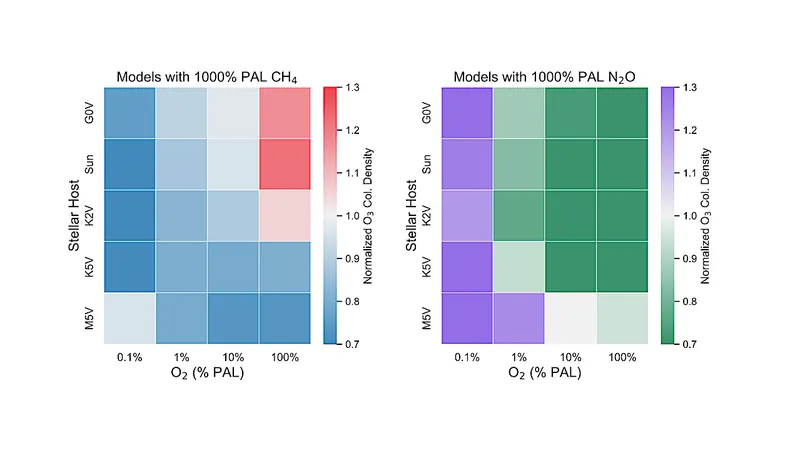
Did Earth, Mars, Venus, and a Lost Planet Once Dance in Cosmic Harmony?
2025-08-02
Author: Wei
A Celestial Dance of Planets Revealed!
A groundbreaking study has uncovered that our solar system's terrestrial planets, including Earth and a long-lost world, may have once moved in perfect sync around the Sun. This revelation not only redefines our understanding of planetary formation but also hints that these planets came into existence far earlier than scientists previously believed.
The Science of Planetary Resonance
Astronomers have become increasingly fascinated by how planetary systems evolve over cosmic time. The discovery of similar planetary systems, particularly the intriguing TRAPPIST-1, has fueled this interest. In such systems, planets can engage in a cosmic waltz called resonance, where their orbits are in a whole-number ratio to one another. For instance, in the TRAPPIST-1 system, the innermost planet completes eight orbits in the time it takes its neighbor to complete five.
How Did This Dance Work?
Resonance occurs among planets formed from a protoplanetary disk, a swirling mass of debris and gas surrounding a young star. Early planets that moved through this gas exchanged momentum, which likely brought them closer together, allowing them to enter resonant patterns.
Jupiter and Saturn's Historical Waltz
Today, our solar system's planets are not in resonance, although Venus and Mars closely approach this state with a ratio of 3.05:1. A landmark study in 2005 discovered that Jupiter and Saturn danced in resonance shortly after their formation, only for this celestial choreography to end abruptly 4.4 billion years ago when the protoplanetary gas began to dissipate.
Rethinking Planetary Formation
Despite the rich history of research, terrestrial planets had not been thoroughly examined for resonance—until now. Chris Ormel, a lead researcher from Tsinghua University, notes that previous theories centered around giant impacts seemed sufficient to explain current planetary behaviors.
Fresh Insights from Martian Isotopes
However, findings from a 2013 study analyzing isotopes on Mars hinted that terrestrial planets could have formed when the protoplanetary disk was still gas-heavy, suggesting a timeline of just 10 million years post-solar system formation—earlier than many existing models propose.
Computer Simulations Shine a Light
To test this theory, researchers created computer simulations that included Jupiter, Saturn, and four rocky planets: Mars, Theia (a hypothetical planet that collided with early Earth), early Earth, and Venus. Interestingly, they excluded Mercury due to its origin through giant impacts.
The simulations placed Saturn closer to Jupiter than today and tracked the growth of the rocky planets. In most scenarios, Venus, Earth, Theia, and Mars formed a resonant chain of 2:3:4:6 within a mere million years.
Stunning Results and Implications
The team ran over 13,000 simulations over 100 million years, eventually modeling Saturn's outward push to replicate ancient instability. Astoundingly, about half of the simulations aligned with the current configuration of terrestrial planets, affirming the historical Theia-Earth collision and the Vulkan-like ratio between Venus and Mars.
Unlocking the Secrets of Venus
These findings also imply that planets formed in a gas-filled environment, far earlier than the current model suggests, potentially making the inner rocky worlds at least 20 million years older. Venus, which has not experienced catastrophic impacts, could provide vital clues about our solar system's age through future mantle samples.
What Does This Mean for Other Planetary Systems?
Additionally, the study sheds light on how giant outer planets can significantly disrupt their inner counterparts. This may explain the absence of large outer planets in resonant systems like TRAPPIST-1, adding another layer of intrigue to our understanding of cosmic formations.
This exciting research was published on July 18 in The Astrophysical Journal, promising to reshape the narrative of solar system formation.




 Brasil (PT)
Brasil (PT)
 Canada (EN)
Canada (EN)
 Chile (ES)
Chile (ES)
 Česko (CS)
Česko (CS)
 대한민국 (KO)
대한민국 (KO)
 España (ES)
España (ES)
 France (FR)
France (FR)
 Hong Kong (EN)
Hong Kong (EN)
 Italia (IT)
Italia (IT)
 日本 (JA)
日本 (JA)
 Magyarország (HU)
Magyarország (HU)
 Norge (NO)
Norge (NO)
 Polska (PL)
Polska (PL)
 Schweiz (DE)
Schweiz (DE)
 Singapore (EN)
Singapore (EN)
 Sverige (SV)
Sverige (SV)
 Suomi (FI)
Suomi (FI)
 Türkiye (TR)
Türkiye (TR)
 الإمارات العربية المتحدة (AR)
الإمارات العربية المتحدة (AR)